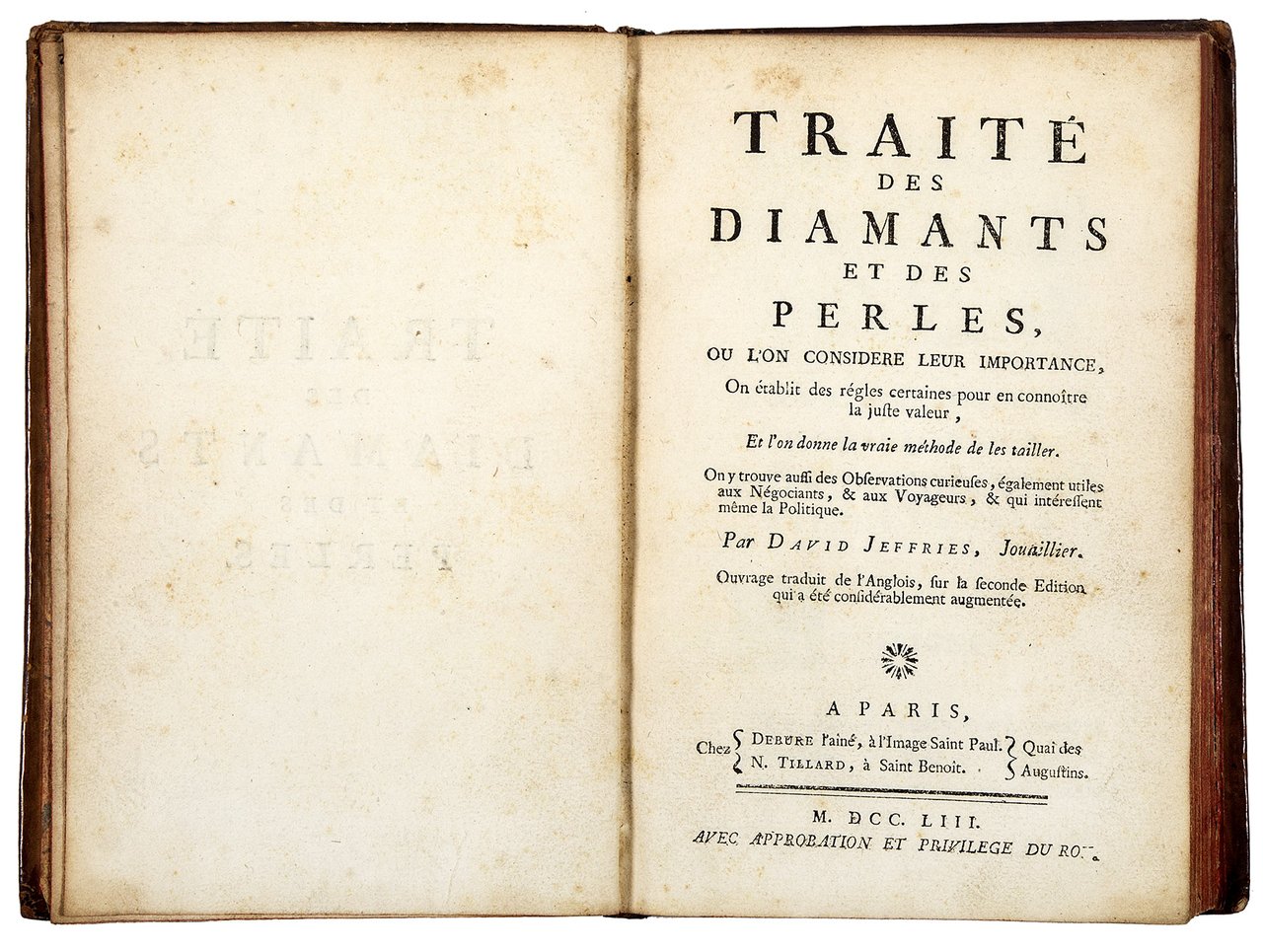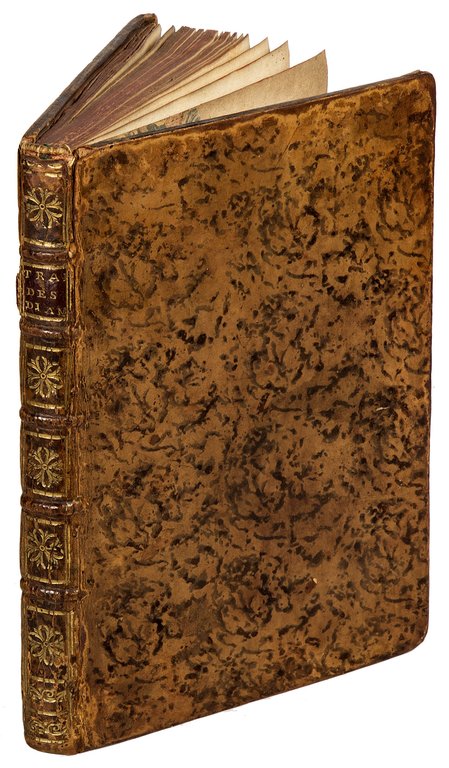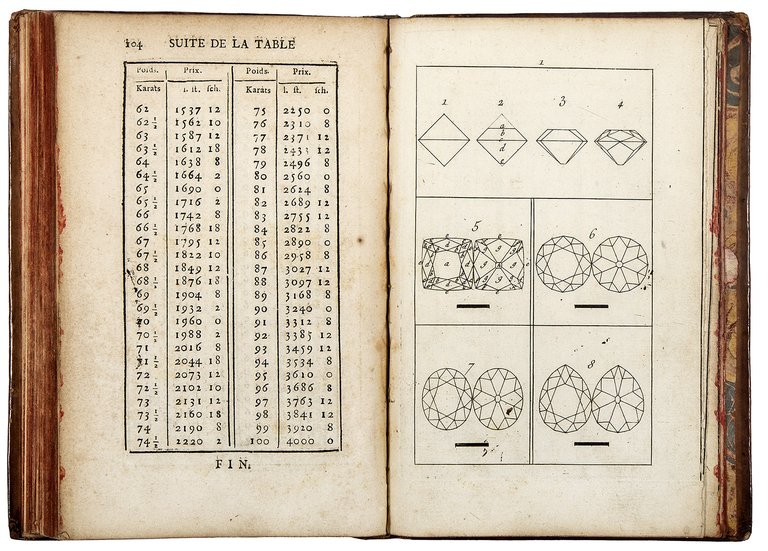


Libros antiguos y modernos
JEFFRIES, David (fl. metà del XVIII sec.)
Traité des diamants et des perles, où l'on considère leur importance, on établit des règles certaines pour en connoître la juste valeur, et l'on donne la vraie méthode de les tailler. On y trouve aussi des observations curieuses, également utiles aux négociants, et aux voyageurs, & qui intéressent même la politique
Debure l''aîné e N. Tillard [Debure l''aîné e N. Tillard], 1753
900,00 €
Govi Libreria Antiquaria
(Modena, Italia)
Los gastos de envío correctos se calculan una vez añadida la dirección de envío durante la creación del pedido. El vendedor puede elegir uno o varios métodos de envío: standard, express, economy o in store pick-up.
Condiciones de envío de la Librería:
Para los productos con un precio superior a 300 euros, es posible solicitar un plan de pago a plazos al Maremagnum. El pago puede efectuarse con Carta del Docente, Carta della cultura giovani e del merito, Administración Pública.
Los plazos de entrega se estiman en función de los plazos de envío de la librería y del transportista. En caso de retención aduanera, pueden producirse retrasos en la entrega. Los posibles gastos de aduana corren a cargo del destinatario.
Pulsa para saber másFormas de Pago
- PayPal
- Tarjeta de crédito
- Transferencia Bancaria
-
-
Descubre cómo utilizar
tu Carta del Docente -
Descubre cómo utilizar
tu Carta della cultura giovani e del merito
Detalles
Descripción
PRIMA EDIZIONE IN FRANCESE, dedicata al Principe di Condé, del fortunato Treatise on Diamonds and Pearls del gioielliere inglese David Jeffries nella traduzione realizzata da Chappotin S. Laurent della Bibliothèque Royale sulla seconda edizione inglese aumentata e corretta (London, 1751). Rispetto alla prima edizione dell'anno precedente, alla seconda edizione furono infatti aggiunte sezioni sui diamanti brasiliani, su metodi alternativi di valutazione e sul taglio indiano.
“The first book in English to describe how diamonds and pearls can be evaluated on the basis of the factors of size (or weight) and style of cut, with allowances being made in the case of diamonds where cut stones depart from the ‘ideal' proportions that were accepted as standard in Jeffries' time. These proportions are radically different from those now considered acceptable because they were based less on the production of maximum brilliance than on retention of the greatest amount of weight from the cutting of a typical octahedral diamond crystal. The ‘ideal' cut in Jeffries' time is a cushion brilliant, ‘old mine' cut, with the pavilion much deeper than employed in modern stones. The proportions and facet patterns are shown in the figures on Plate 1 and others following. Also shown are rose cut gems, graduated as before according to size and weight. The text explains the cutting procedure, how the evaluation rules were derived, the importance of imperfections and flaws as affecting price, notes on rough diamonds, previous authors who attempted to establish valuation rules, and finally, a somewhat similar procedure for the valuation of pearls, with highest values accorded to pearls of closest approach to spherical perfection, luster, etc.... Being understandable in its explanations and providing accurate tables, this work immediately won acclaim” (J. Sinkanskas, Gemology, an annotated bibliography, London, 1993, nr. 3195 per la prima edizione).
“An example of a book that is of both artifactual and intellectual value to jewelry historians is David Jeffries' A Treatise on Diamonds and Pearls written and published in 1750, which describes the commercial aspects of cut diamonds, establishing guidelines for evaluating, pricing, and defining diamond cutting styles. This book is thought to be one of the first books to discuss these topics, and it is listed as a source by many of the authors of the early books found in the core bibliography” (Ch. De Bow Klein, Jewelry History: A Core Bibliography in Support of Preservation, Washington, 1992).
Brunet, III, 526; Sinkanskas, op. cit., nr. 3198; Catalogo unico, IT\ICCU\RMRE\000847.

